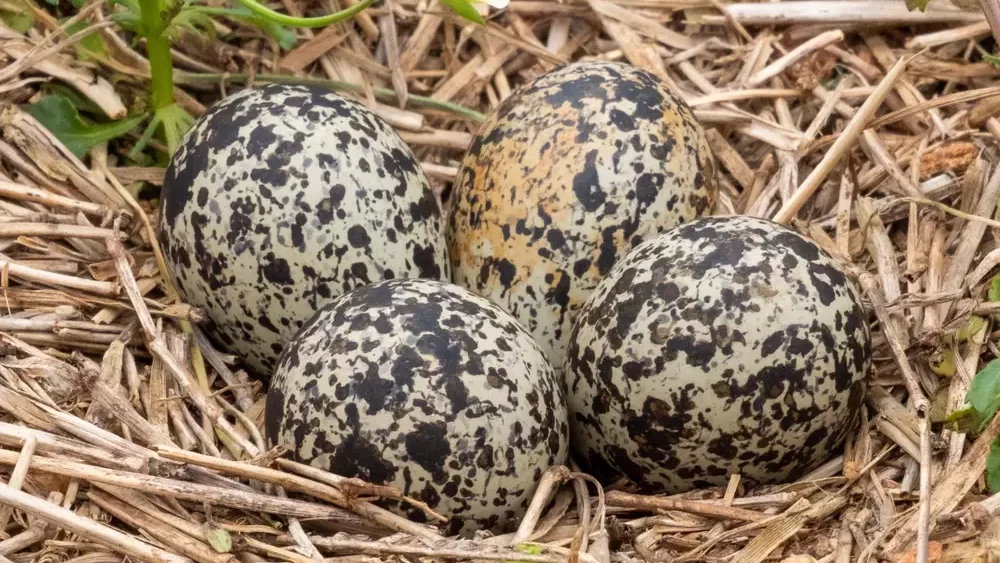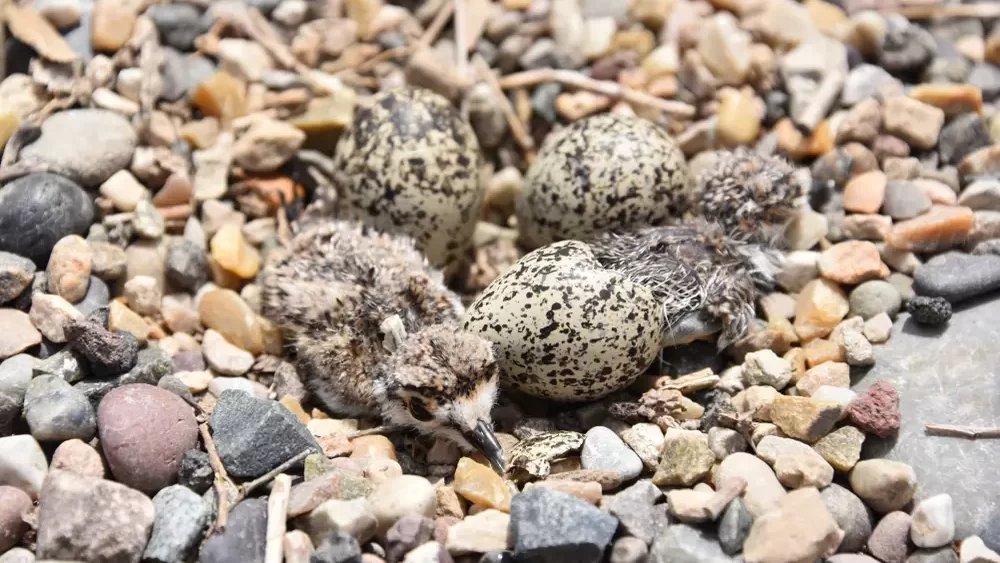Have you ever come across a bird feigning injury to protect its nest? Killdeers are famous for doing exactly that!
These fascinating birds lay their eggs in rather unconventional places, like gravelly areas or open ground, making it difficult for predators to spot their nests.
As captivating as their unique behavior is, you might be curious about the whole process – from laying eggs to hatching.
In this article, we’ll delve into the wonderful world of Killdeer eggs and their journey to hatching.
Understanding the Killdeer Bird
Killdeers (Charadrius vociferus) are medium-sized plovers known for their distinctive broken-wing display.
They are found throughout North and Central America, primarily in open fields, gravel areas, and even urban environments.
These birds have a brownish upper body, white belly, two black breast bands, and a red eye-ring, making them easily recognizable.
Nesting Habits of Killdeer
Killdeers exhibit an interesting approach to nesting. They create shallow scrapes on the ground, which they line with pebbles, twigs, or grass.
Their nesting sites are typically in open areas like gravel roads, agricultural fields, or even parking lots. This choice of nesting location may seem odd, but it allows them to spot approaching predators easily.
The Killdeer’s Unique Defense Mechanisms
The Killdeer bird’s nesting behavior makes it vulnerable to predators. To counter this, they have developed a unique defense mechanism called the “broken-wing display.”
When a predator approaches, the adult bird will act injured, dragging a wing on the ground to lure the predator away from the nest.
Once the predator is far enough from the nest, the bird will miraculously “recover” and fly away, keeping its eggs and chicks safe.

Killdeer Egg Characteristics
Killdeer eggs are relatively large, considering the size of the bird. They have a pear-shaped appearance and are around 1.3 inches (3.3 cm) long.
The eggs are light beige or buff-colored, covered with irregular dark brown or black spots, which help camouflage them in their open, gravelly nesting environment.
Incubation Period
The incubation period for Killdeer eggs typically lasts between 22 and 28 days. Both the male and female Killdeer share the responsibility of incubating the eggs.
They take turns sitting on the nest, ensuring the eggs are kept warm and safe from predators.
Factors Affecting the Incubation Period
The exact duration of the incubation period can vary due to several factors:
Temperature
The external temperature plays a vital role in determining the incubation period. Warmer temperatures can accelerate the hatching process, while cooler temperatures may extend it.
Humidity
Adequate humidity levels are essential for the proper development of the embryos. Fluctuations in humidity can influence the length of the incubation period.
Parental care
The attentiveness and dedication of the parent birds directly impact the success of the incubation.
If the parents are frequently disturbed or absent from the nest, the incubation period may be prolonged, or the eggs may fail to hatch altogether.

Hatching Process
As the incubation period comes to an end, Killdeer chicks begin the hatching process. The chicks use an egg tooth, a small, sharp projection on their beak, to crack the eggshell.
This process, called pipping, can take several hours. Once the chicks break through the shell, they emerge fully feathered and are considered precocial, meaning they can walk, feed, and even run within a few hours of hatching.
Caring for Killdeer Chicks
Killdeer parents continue to protect and care for their chicks after hatching. The adult birds will continue to perform their broken-wing display to distract predators from their vulnerable offspring.
The chicks are primarily insectivorous and begin foraging for food alongside their parents soon after hatching.
The chicks become independent within a month, after which they are capable of fending for themselves and eventually finding mates to start the breeding cycle anew.
Conservation and Threats
Killdeer populations are considered stable, and the species is not currently listed as threatened or endangered.
However, they still face numerous challenges, including habitat loss due to urban development and agricultural expansion.
Additionally, their ground-nesting habits make their eggs and chicks susceptible to predation and human disturbance.
Conservation efforts include educating the public about the importance of preserving Killdeer habitats and the unique behavior of these fascinating birds.
FAQs
How many eggs do Killdeer birds lay?
Killdeers typically lay a clutch of 4-6 eggs, although the number can vary depending on individual circumstances and environmental factors.
Do Killdeers mate for life?
Killdeers are seasonally monogamous, meaning they generally form pair bonds that last for a single breeding season.
However, it is not uncommon for pairs to re-form in subsequent seasons if both individuals return to the same breeding area.
Can Killdeer eggs survive flooding or heavy rain?
Although Killdeer eggs can withstand short periods of flooding or heavy rain, prolonged exposure to excessive moisture may cause the embryos to die or prevent the eggs from hatching.
Final Word
The incredible story of Killdeer eggs, from their distinctive nests to the captivating broken-wing display of the parent birds, is truly a marvel of nature.
The journey these eggs take to hatch is influenced by various factors, including temperature, humidity, and parental care.
By understanding and appreciating the unique life cycle of Killdeer birds, we can help ensure the continued survival of this remarkable species.
We have a pair of Killdeer nesting across the road from our house. Only seen one nestling so far. They look so damned vulnerable there.